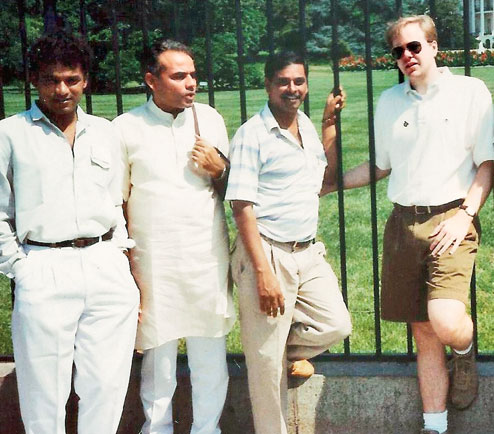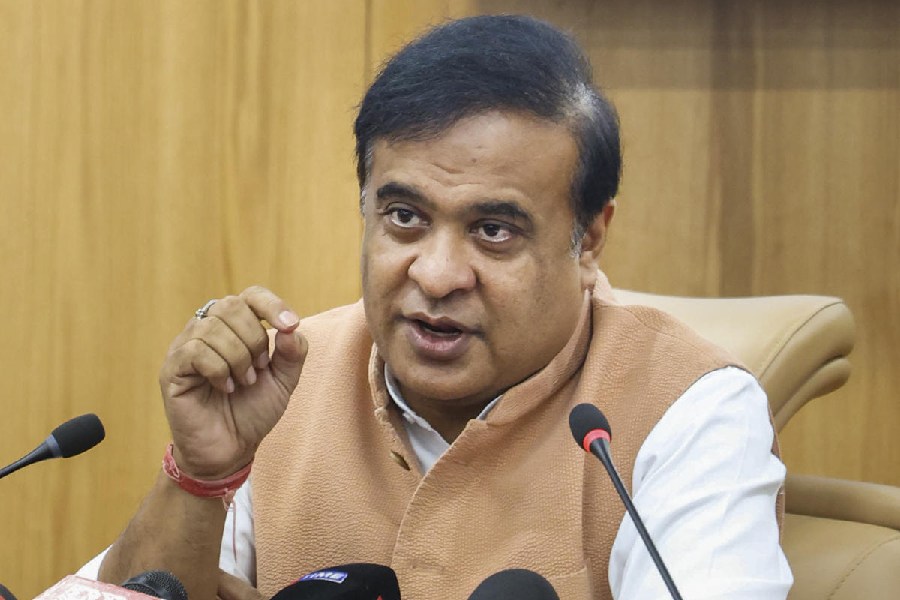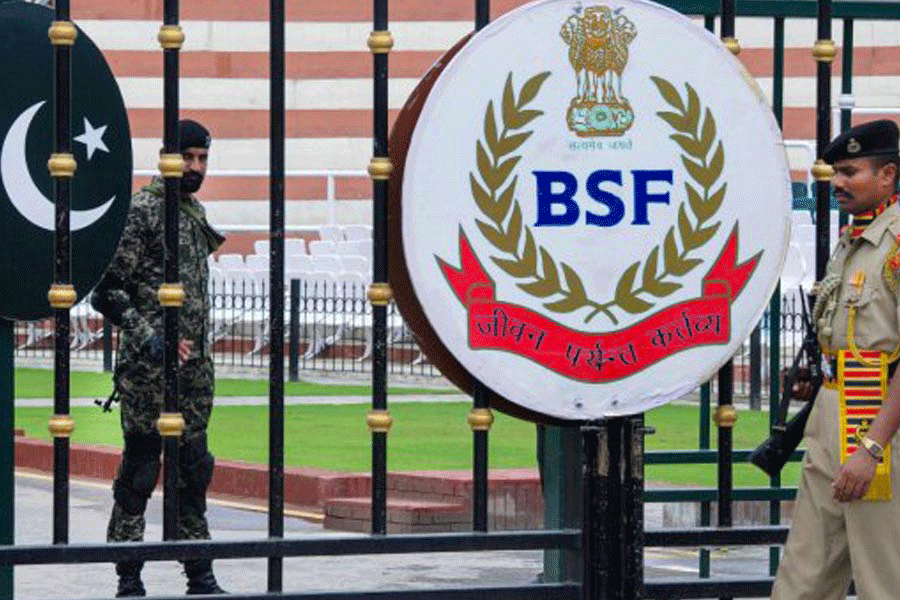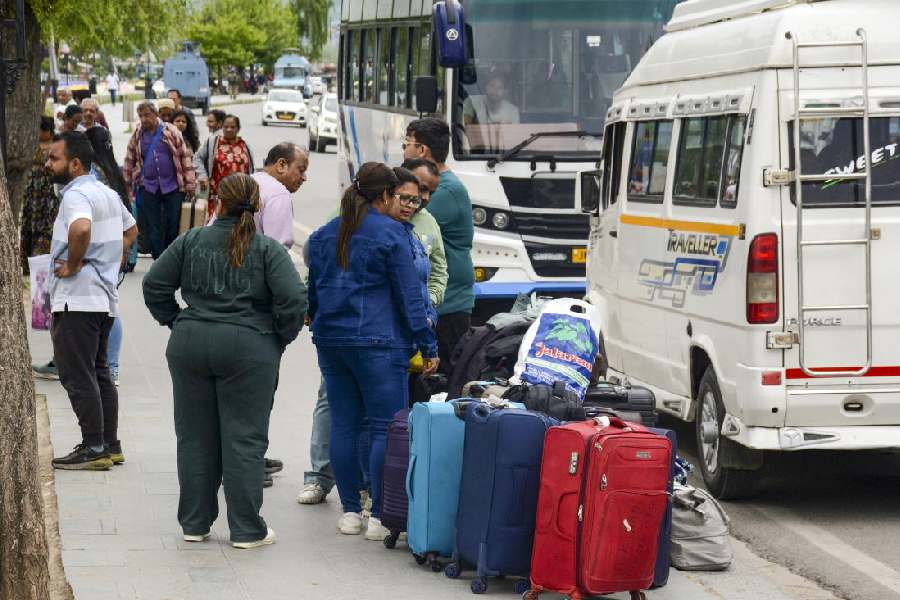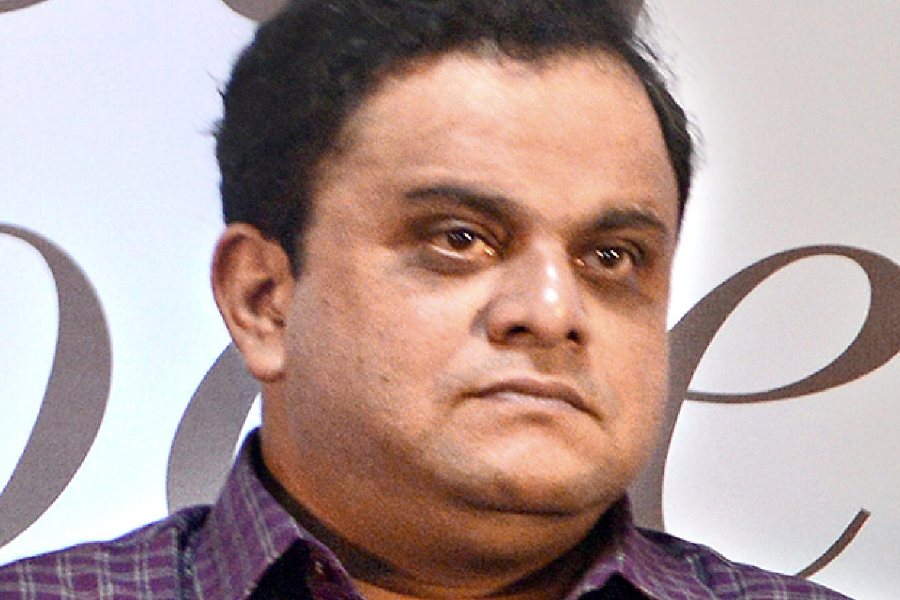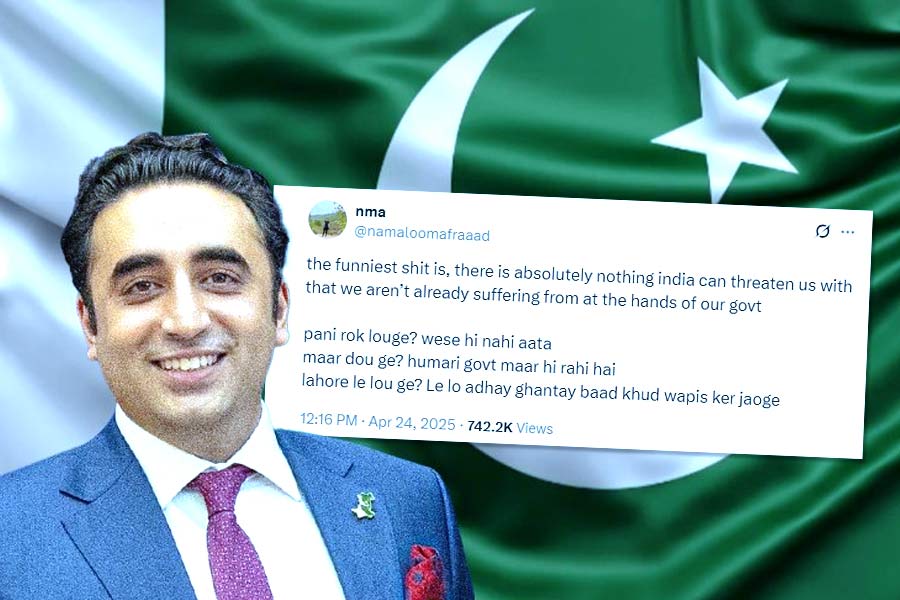 |
| Narendra Modi (second from left) outside the White House during a trip in 1994. (PTI) |
Washington, Sept. 25: Narendra Modi’s hitherto unknown role in the Kargil pullout forced on Pakistan by US President Bill Clinton on July 4, 1999, has thrown light on Modi’s style of functioning as Prime Minister which has confounded his cabinet colleagues, put the bureaucracy on its toes and drawn grudging praise in the media.
T.P. Sreenivasan, who was deputy chief of mission at the Indian embassy here during the critical week in the Kargil denouement, confirmed to The Telegraph that Modi rang him up after arriving in Washington in the last week of June 1999.
Modi did not have the public persona then which he acquired in subsequent years and was catapulted to chief ministership of Gujarat to protect the party’s turf amidst mismanagement by the BJP’s state leadership at that time.
However, Sreenivasan agreed to meet Modi and the latter went to his office at the embassy. “I was meeting Modi for the first time. But I found him interesting enough to want to expose him to Washington. I asked him who he would like to meet and offered to arrange meetings using the mission’s good offices,” Sreenivasan said.
To his great surprise, Modi told the senior diplomat that he wanted to meet people at the World Bank and the International Monetary Fund (IMF). “I was surprised,” said Sreenivasan, who was puzzled by Modi’s unusual request. “Usually visiting politicians from India want to meet Senators or members of the US cabinet and be photographed with them. But here was someone who wanted to meet only World Bank and IMF officials.”
Sreenivasan could not have known, of course, that Modi was already working on Capitol Hill on his own steam with the help of his party faithful like Shekhar Tiwari, co-founder of Overseas Friends of BJP, and the late Narayanan Kesavan, then a foreign policy aide to Congressman Gary Ackerman, head of the India Caucus in the US House of Representatives in the formative years of the group.
“Now, after all these years, it offers a clue,” Sreenivasan said of The Telegraph report on Monday which revealed Modi’s role in amending a House resolution criticising Pakistan to include cutting off World Bank, IMF and Asian Development Bank loans to Islamabad for its Kargil intrusion.
“The amendment moved by Ackerman that potentially hurt Pakistanis financially in a way that mere condemnation by the US would not have affected them was critical to getting (then) Prime Minister Nawaz Sharif to pull out from Kargil on July 4, three days after the Ackerman amendment passed in the House committee,” a diplomat who handled Kargil matters in the ministry of external affairs at that time said.
The official, now very senior in the Indian diplomatic establishment, declined to be quoted because the source is still in service and is not authorised to speak on record on this subject. But this official also did not know then about Modi’s role.
These two responses from people who either had a role in Modi’s visit to Washington 15 years ago or dealt with Pakistan’s Kargil adventure are pointers to how Modi operates in clearly defined compartments with set objectives towards which he works to a plan.
That was obvious during the recent Lok Sabha election which brought about the BJP’s victory and subsequently in government where he, as Prime Minister, has initiated some changes both in style and substance of statecraft.
Sreenivasan said the response at the World Bank and the IMF when he offered an interaction with Modi was overwhelming. He realised that in financial institutions, they knew Modi — even then — much better than in the diplomatic establishment.
About 50 persons from the World Bank and the IMF responded to Sreenivasan’s invitation to meet Modi, far exceeding his expectations. “I had planned a sit-down dinner because I realised Modi had things to say and the international civil servants from finance and development sectors were very keen to listen to him. But I could accommodate no more than 20 persons at the dining table at my Washington home.”
Eventually, he settled the dilemma by having two events in one night at his home. All the 50 or so invitees attended a reception where Modi mingled. Later, about 20 invitees adjourned to the dining table where they had an interactive exchange with the visiting BJP leader and RSS pracharak whose visit to the US this week these men and women are now looking forward to.
But even at Sreenivasan’s reception and dinner, Modi typically operated compartmentally. He gave no clue to anyone there that he was separately persuading Ackerman and other Congressmen to amend “House resolution 227” on Kargil invasion in a way that hurt Pakistan so much that it gave up its aggression.
Modi engaged in such persuasion the following day on Capitol Hill, according to Tiwari who helped organise a campaign that put pressure from Indian Americans on the House of Representatives.
Documents on Capitol Hill naturally do not offer records of Modi’s role in the Ackerman amendment because it would be heresy for any Congressman to acknowledge on record that a foreign leader was influencing their judgement or decisions. The US and its elected officials are presumed to be taking decisions solely in American interest of their own free will.
The only exception, which is an open secret here, is in the case of Israel. Modi’s role in facilitating US pressure to get Pakistan to withdraw from Kargil was the first time the Israeli yardstick was applied to an issue related to India.
Which is why there is tremendous curiosity at inter-agency meetings here preparing for Modi’s meeting with Barack Obama next week to divine if the Prime Minister will do something similar when he visits the White House.

